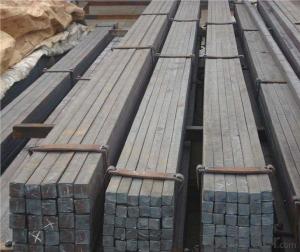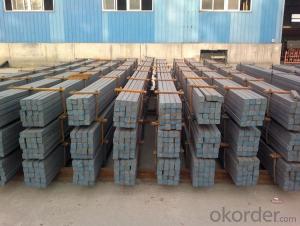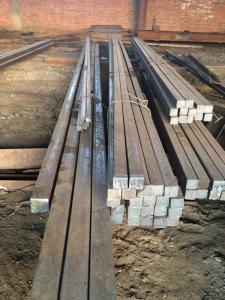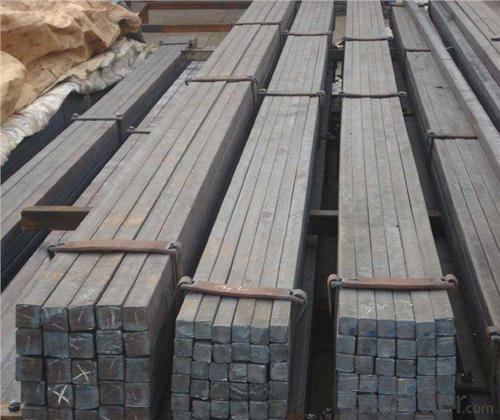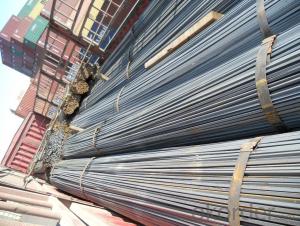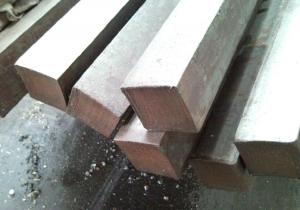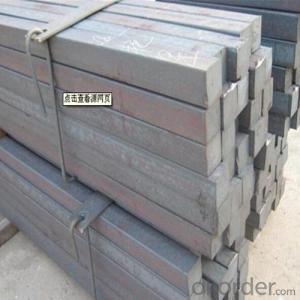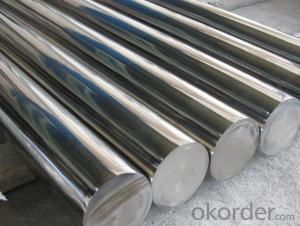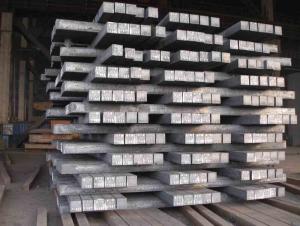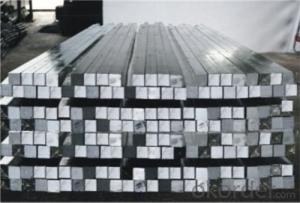Hot Rolled Square Bar Steel for Constrcution
- Loading Port:
- Tianjin
- Payment Terms:
- TT or LC
- Min Order Qty:
- 25 m.t.
- Supply Capability:
- 200000 m.t./month
OKorder Service Pledge
OKorder Financial Service
You Might Also Like
Product Description:
OKorder is offering Hot Rolled Square Bar Steel for Constrction with worldwide shipping. Our supplier is a world-class manufacturer of steel, with our products utilized the world over. OKorder annually supplies products to European, North American and Asian markets. We provide quotations within 24 hours of receiving an inquiry and guarantee competitive prices.
Product Applications:
-The Hot Rolled Square Bar Steel for Constrction is normally used as structure steel.
-Row material for other structure steel like steel angles, channels, I-beams, H-beams, etc…
Product Advantages:
OKorder's Hot Rolled Square Bar Steel for Constrction are durable, strong, and resist corrosion. Ang they satisfy the requirements of dififrent customers.
Main Product Features:
· Premium quality
· Prompt delivery & seaworthy packing (30 days after receiving deposit)
· Corrosion resistance
· Can be recycled and reused
· Mill test certification
· Professional Service
· Competitive pricing
Product Description of Hot Rolled Square Bar Steel for Constrcution:
Specifications of Hot Rolled Square Bar Steel for Constrcution:
-Standard: GB,
-Grade: Q195/Q235 or equivalent.
Chemical Composition:
-Chemical Composition. Q195
Standard | Grade | Element (%) | ||||
GB | Q195 | C | Mn | S | P | Si |
0.06~0.12 | 0.25~0.50 | ≤0.050 | ≤0.045 | ≤0.30 | ||
-Chemical Composition. Q235
Standard | Grade | Element (%) | ||||
GB | Q235B | C | Mn | S | P | Si |
0.12~0.20 | 0.30~0.70 | ≤0.045 | ≤0.045 | ≤0.30 | ||
Measures and Tolerances of Hot Rolled Square Bar Steel for Constrcution:
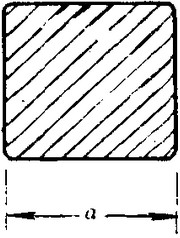
(The section of Hot Rolled Square Bar Steel for Constrcution)
-The length of a side and the theoretical weight of Hot Rolled Square Bar Steel for Constrcution.
Length of a side(a, mm) | Theoretical weight(kg/m) | Length of a side(a, mm) | Theoretical weight(kg/m) |
6 | 0.283 | 32 | 8.04 |
7 | 0.385 | *33 | 8.55 |
8 | 0.502 | 34 | 9.07 |
9 | 0.636 | *35 | 9.62 |
10 | 0.785 | 36 | 10.17 |
11 | 0.950 | 38 | 11.24 |
12 | 1.13 | 40 | 12.56 |
13 | 1.33 | 42 | 13.85 |
14 | 1.54 | 45 | 15.90 |
15 | 1.77 | 48 | 18.09 |
16 | 2.01 | 50 | 19.63 |
17 | 2.27 | 53 | 22.05 |
18 | 2.54 | *55 | 23.6 |
19 | 2.82 | 56 | 24.61 |
20 | 3.14 | *58 | 26.4 |
21 | 3.46 | 60 | 28.26 |
22 | 3.80 | 63 | 31.16 |
*23 | 4.15 | *65 | 33.17 |
24 | 4.52 | *68 | 36.3 |
25 | 4.91 | 79 | 38.49 |
26 | 5.30 | 75 | 44.16 |
*27 | 5.72 | 80 | 50.24 |
28 | 6.15 | 85 | 56.72 |
*29 | 6.60 | 90 | 63.59 |
30 | 7.06 | 95 | 70.85 |
*31 | 7.54 | 100 | 78.50 |
Notes:
1, The theoretical weights in the list, base on the density of 7.85 g/cm3.
2, The numbers with *mean that they are not regulars or we don’t offer them.
-The allowed tolerance of Square Steel:
Length of a side(mm) | Allowed Tolerance | ||
Group1 | Group2 | Group3 | |
5.5~7 | ±0.20 | ±0.30 | ±0.40 |
7~20 | ±0.25 | ±0.35 | ±0.40 |
20~30 | ±0.30 | ±0.40 | ±0.50 |
30~50 | ±0.40 | ±0.50 | ±0.60 |
60~80 | ±0.60 | ±0.70 | ±0.80 |
80~110 | ±0.90 | ±1.0 | ±1.1 |
110~150 | ±1.2 | ±1.3 | ±1.1 |
150~190 | ―― | ―― | ±2.0 |
190~250 | ―― | ―― | ±2.5 |
Packaging & Delivery of Steel Square Bar:
-Packing Detail: The products can be packed in bundles by steel wires.
-Marks:
1, Tag marks: the tag marks will be tied up to each bundle of the products. The information is usually including supplier’s logo and name, product name, made in China, products’ specifications, the painted color and other information requested by customers.
2, Color marks: we will paint both ends of the bundles of these products to make sure that they are more evident. It’s will be more convenient for the customers to distinguish them at the destination port.
-Delivery Detail: 30~45 working days after receive buyer’s T.T. or L/C.
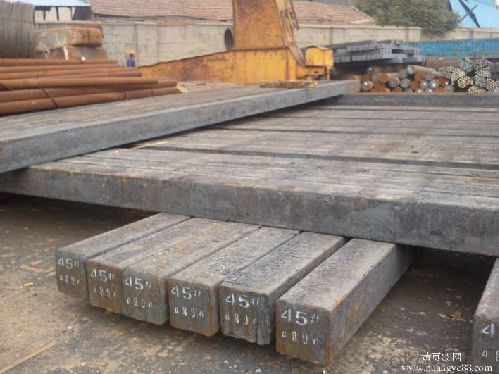
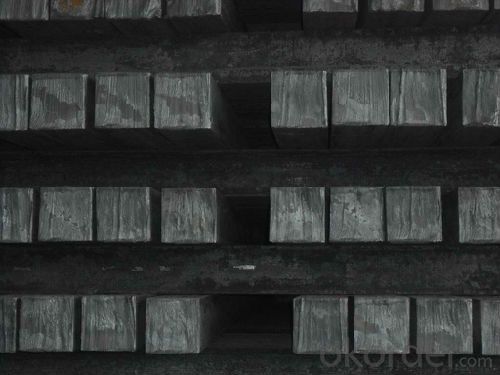
FAQ:
Q1: The products are invoicing on theoritical weight or on actual weight?
A1: We can do it in both manners, according to the customers' request.
Q2: How soon can we receive the product after purchase?
A2: Within three days of placing an order, we will begin production. The specific shipping date is dependent upon international and government factors, but is typically 7 to 10 workdays.
Q3: How do we guarantee the quality of our products?
A3: We have established an advanced quality management system which conducts strict quality tests at every step, from raw materials to the final product. At the same time, we provide extensive follow-up service assurances as required.
- Q: How do you use a steel square to measure board diagonals at different angles?
- In order to measure board diagonals at various angles using a steel square, it is necessary to follow these instructions: 1. Prioritize cleanliness and ensure that the steel square is free from dirt or debris that may affect its accuracy. 2. Position the steel square on the board, aligning one of its edges with the board's edge. 3. Confirm that the square is securely placed and does not move or shift during the measurement procedure. 4. Determine the diagonal line that requires measurement. Depending on the angle of interest, this could be a 45-degree angle or any other specific angle. 5. Align the angle or measurement mark on the square with the board's edge, ensuring that it is perpendicular to the edge. 6. Extend the measurement from the marked angle across the board until it reaches the opposite edge. 7. Take note of the measurement or mark the endpoint of the diagonal line for future reference. 8. Repeat the above steps to measure any other diagonals or angles desired. It is crucial to maintain precision in your measurements and ensure that the steel square remains firmly in place throughout the process. By following these steps, you can effectively utilize a steel square to measure board diagonals at various angles.
- Q: Can a steel square be used for checking the squareness of a jointer guard?
- Using a steel square to check the squareness of a jointer guard is not possible. The primary function of a steel square is to assess the squareness of edges and corners, and it may not yield precise outcomes when employed for examining the squareness of a jointer guard. Jointer guards have specific angles and dimensions that necessitate proper alignment for safety and optimal performance. It is advisable to utilize the appropriate tools and techniques recommended by the manufacturer or seek guidance from a professional to guarantee accurate squareness of a jointer guard.
- Q: What are some common uses for a steel square in cabinet making?
- Cabinet making involves the use of a versatile tool called a steel square, also known as a combination square. This tool finds numerous applications in cabinet making, allowing for precise and accurate work. Here are some common ways in which a steel square is used in cabinet making: 1. Precise measurement and marking: The steel square is perfect for accurately measuring and marking straight lines, right angles, and other angles. This ensures precise dimensions for cabinet components like shelves, doors, and panels. 2. Verification of squareness: In order to ensure proper alignment and stability of the cabinet structure, accurate right angles are required. A steel square is used to check if corners and joints are perfectly square, allowing for adjustments if needed. 3. Layouts and cuttings: The steel square is extremely helpful in laying out and marking cut lines on materials such as plywood or lumber. It establishes accurate reference points for cutting cabinet parts, ensuring a seamless fit. 4. Marking joinery: Joinery techniques like dovetail, mortise and tenon, or box joints require precise measurements and markings. A steel square assists in accurately marking out these joints, resulting in strong and well-fitted connections. 5. Positioning hardware: Steel squares can be used to position hardware elements such as hinges, drawer slides, or handles. By aligning the square with the cabinet's edges and corners, it ensures consistent and proper placement of these elements. 6. Verification of flatness: The steel square can be used to check the flatness of cabinet surfaces, such as tabletops or cabinet doors. By placing the square against the surface, any gaps or irregularities can be detected, allowing for adjustments or corrections. In conclusion, a steel square is an essential tool for cabinet makers. Its ability to measure, mark, check for squareness, and assist in various layout tasks ensures precision and accuracy in cabinet making.
- Q: How do you use a steel square to determine the length of a miter cut?
- Here are the steps for accurately determining the length of a miter cut using a steel square: 1. Align one arm of the steel square with the edge of the material that needs to be cut, placing it at a 45-degree angle. 2. Mark the material along the other arm of the square using a pencil or a scribe. This mark represents the angle of the miter cut. 3. Measure the length of the marked line using a tape measure or a ruler. This measurement indicates the length of the miter cut. 4. Transfer the measured length to the material that requires cutting. Use the pencil or scribe to mark the length on the material. 5. Verify the alignment of the steel square and the marked line to ensure accuracy. Make any necessary adjustments before proceeding with the cut. 6. Cut along the marked line using a suitable saw for the material, creating the miter cut. By employing a steel square in this manner, you can precisely determine the length of a miter cut and guarantee that your material is cut at the desired angle.
- Q: Are there any special techniques for using a steel square in masonry work?
- Yes, there are several special techniques for using a steel square in masonry work. Firstly, it is important to ensure that the steel square is clean and free from any debris or dirt. This will help in achieving accurate measurements and angles. When using the steel square to measure and mark angles, it is recommended to hold the square firmly against the surface and use a pencil or chalk to mark the desired angle. This will ensure that the measurements are precise and consistent. Another important technique is to use the steel square as a guide when cutting or shaping bricks or stones. By aligning the square with the edge of the material, it can serve as a reference point to guide the saw or chisel, resulting in clean and accurate cuts. Furthermore, the steel square can also be used to check for squareness and alignment in masonry work. By placing the square against the corners or edges of the structure, it can help identify any discrepancies or deviations from a perfect 90-degree angle. This is particularly useful when constructing walls or laying bricks to ensure a sturdy and well-aligned structure. Overall, using a steel square in masonry work requires precision and attention to detail. By following these special techniques, it can greatly assist in achieving accurate measurements, angles, and alignment, ultimately resulting in high-quality masonry work.
- Q: Can a steel square be used for deck construction?
- Yes, a steel square can be used for deck construction. Steel squares, also known as framing squares or rafter squares, are versatile tools commonly used by carpenters in construction projects, including deck building. They are typically made of steel and have markings and measurements that help with layout and angle calculations. Steel squares can be used to measure and mark cuts, check for squareness, and lay out the framing components of a deck, such as joists, beams, and posts. They are durable and provide accurate measurements, making them a suitable choice for deck construction.
- Q: Can a steel square be used for shed layout and construction?
- Indeed, shed layout and construction can indeed make use of a steel square. Known by various names such as framing square or carpenter's square, this adaptable tool possesses the ability to measure and mark angles, ascertain squareness, and establish straight lines and right angles. Carpenters and builders commonly rely on this tool for diverse construction ventures, including the creation of sheds. Its steel composition ensures both accuracy and stability, rendering it a trustworthy companion in shed layout and construction. Be it the marking and cutting of lumber, the verification of squareness during assembly, or the guarantee of precise angles, a steel square proves to be an invaluable asset throughout the shed building process.
- Q: How do you hold a steel square properly?
- To hold a steel square properly, follow these steps: 1. Start by gripping the handle of the steel square firmly with your dominant hand. Ensure that your fingers are wrapped around the handle for a secure grip. 2. Position your thumb on top of the handle, resting it against the steel blade. This will provide additional stability and control while holding the square. 3. Place your non-dominant hand on the opposite end of the steel blade, near the corner. Use your thumb and fingers to hold the blade firmly in place. 4. Make sure that the steel square is parallel to your body, with the blade facing away from you. This position will allow for accurate measurements and markings. 5. When using the steel square, press the blade firmly against the surface or material you are working on. This will help maintain stability and prevent any movement that could affect the accuracy of your measurements. 6. Always keep your fingers clear of the blade edge to avoid any potential accidents or injuries. Pay attention to where your fingers are positioned as you work. 7. Lastly, maintain a comfortable and balanced stance while holding the steel square. This will enable you to have better control and accuracy when using it for measuring or marking purposes. By following these guidelines, you can ensure that you are holding a steel square properly, allowing you to work efficiently and accurately in various woodworking, metalworking, or construction projects.
- Q: How do you use a steel square for marking stair baluster spacing?
- To use a steel square for marking stair baluster spacing, you will need to follow a few simple steps. 1. Start by measuring the width of the baluster you plan to use. This will determine the spacing between each baluster. 2. Once you have the width measurement, transfer that measurement to the steel square. Locate the edge of the square that corresponds to the width of the baluster. 3. Position the square on the handrail or the bottom rail of the stair railing, depending on where you want to mark the baluster spacing. Align the edge of the square with the starting point and make sure it is parallel to the rail. 4. Using a pencil or a marker, mark the rail at the other edge of the steel square. This will indicate the first baluster placement. 5. Slide the square along the rail, aligning the edge with the previous mark, and repeat the marking process until you have marked the desired number of baluster placements. 6. Double-check your markings to ensure they are evenly spaced and aligned properly. 7. Once all the marks are made, you can proceed with installing the balusters according to the marked locations. Using a steel square for marking stair baluster spacing provides a reliable and consistent method to ensure accurate placement. It helps maintain uniformity throughout the railing, resulting in a visually appealing finished product.
- Q: Can a steel square be used for checking the squareness of a picture frame?
- Indeed, the squareness of a picture frame can be assessed by employing a steel square. Functioning as a measuring instrument, the steel square possesses a 90-degree angle, rendering it suitable for gauging right angles. Simply position the steel square against the picture frame's corners, and effortlessly ascertain whether the frame is flawlessly square or if any inconsistencies exist. In the event that the frame is not square, one can rectify the situation by making necessary adjustments to ensure proper alignment of the corners and straightness of the frame.
Send your message to us
Hot Rolled Square Bar Steel for Constrcution
- Loading Port:
- Tianjin
- Payment Terms:
- TT or LC
- Min Order Qty:
- 25 m.t.
- Supply Capability:
- 200000 m.t./month
OKorder Service Pledge
OKorder Financial Service
Similar products
Hot products
Hot Searches
Related keywords
